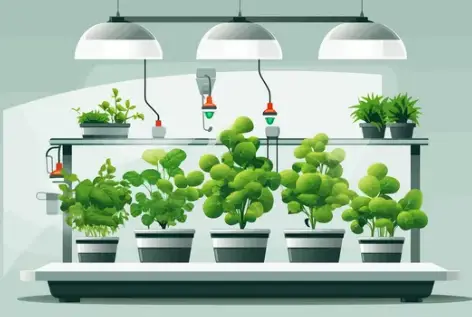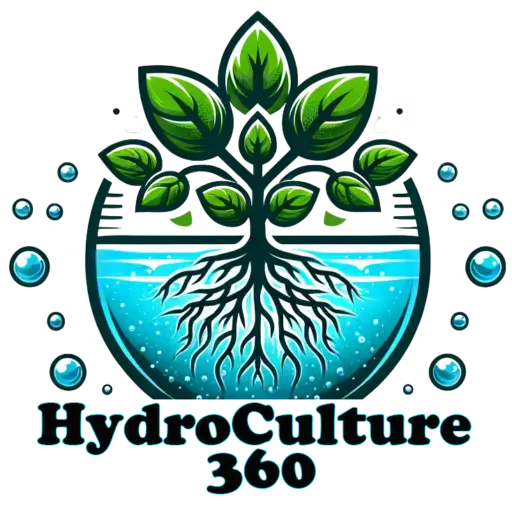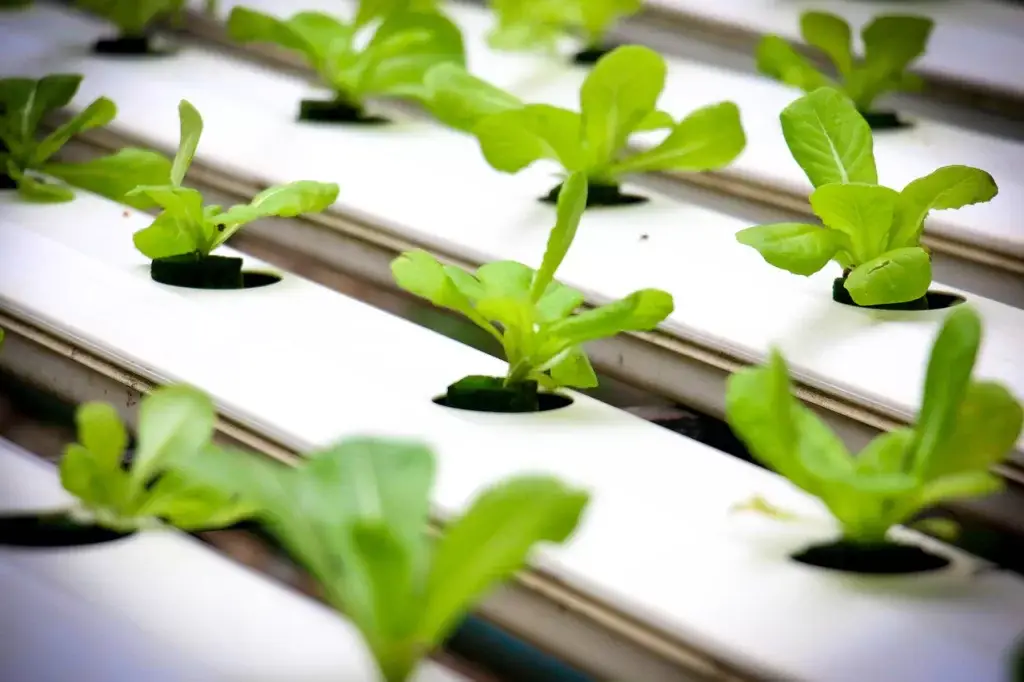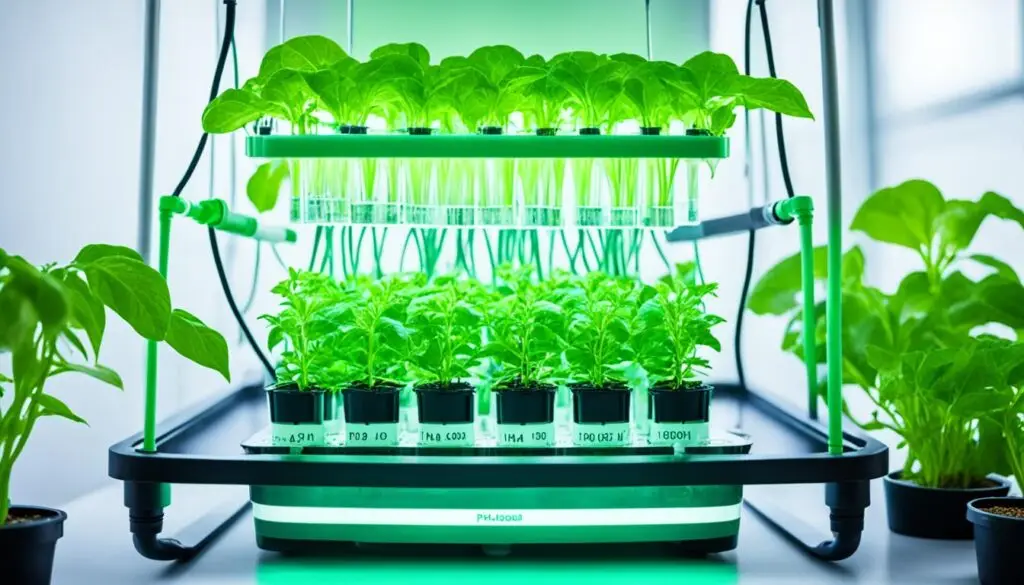Mastering Hydroponics: An Easy Guide for Beginners
Intro
Hydroponics is a unique form of horticulture that leverages the power of water and nutrients to grow plants. This method does not involve the use of soil, opening up new possibilities for gardening indoors, in urban spaces, and even in outer space! But where does a beginner start? In this blog post, we will guide you through the basics of hydroponics to get you started on your journey to a green thumb.
Understanding the Basic Concept of Hydroponics

Let’s dive headfirst into the revolutionary world of hydroponics!
This farming approach catapults plant growth into the 21st century, leaving behind the soil and embracing nutrient-rich water as the primary growth medium.
Imagine this: healthier plants, growing faster, and taking up significantly less space than their soil-based counterparts.
Hydroponics allows you to bring the power of a full-scale garden inside your home, perfect for city dwellers or those who are contending with less than ideal weather.
So, you’re probably wondering, “how does this hydroponics magic work?” It’s simpler than you think.
Plants get everything they need directly through the water.
Your living room, kitchen, or bedroom can become a thriving garden, all without a speck of dirt in sight!
Now that you’re aware of the transformative potential of hydroponics, let’s take a closer look at the key components that make this all possible.
Key Components of a Hydroponic System

Let’s examine the indispensable elements powering the wonder of hydroponics.
The key ingredients in any hydroponic system are few but crucial.
First up is the growing medium, an unsung hero that provides a solid support system for your plant roots.
Unlike soil, this medium can be anything from coconut fiber to clay pebbles, each one offering unique benefits.
Next in line is the lifeblood of hydroponics: the nutrient solution. This potent mix of vital nutrients offers your plants a direct buffet line to all they need for vigorous growth.
With the right balance, you can supercharge your plant growth, bringing your harvest time forward considerably.
Of course, the nutrient solution needs a vehicle to reach your plants. Enter the water delivery system, the veins of your hydroponic setup.
It circulates the nutrient-rich solution to every nook and cranny, making sure each plant is well-fed and thriving.
Beyond these core components, your hydroponic system might need some extra gear, depending on your circumstances.
A good lighting system can compensate for a lack of natural sunlight. Temperature control systems can ensure your plants are always cozy, regardless of the weather outside.
And a pH level monitor can help maintain the perfect balance in your nutrient solution, ensuring optimal plant absorption.
These components work in concert, creating a harmonious environment for your plants to flourish in.
Understanding each component’s role will go a long way in aiding your successful hydroponic journey.
Choosing the Right Hydroponic System for Your Needs

Venturing into hydroponics can be quite an adventure, with a plethora of systems awaiting you, each with its unique set of perks.
Your needs and expertise level are key factors in determining the best hydroponic system to adopt.
If you’re new to hydroponics, simplicity should be your north star.
Systems like the Wick System or the Water Culture System are perfect for beginners.
They’re straightforward to set up and require minimal upkeep, making them the perfect playground to dip your toes into hydroponics.
However, if you’re ready to raise the bar a notch higher, systems like the Nutrient Film Technique and the Aeroponic System could pique your interest.
These sophisticated setups require a bit more finesse and attention, but their reward is a higher yield and the satisfaction of mastering a more complex system.
But don’t worry, every step in your hydroponic journey will equip you with the skills needed to tackle these setups.
It’s all part of the fun!
Remember, there’s no one-size-fits-all in hydroponics. Just like plants, every gardener is unique.
Your choice will hinge on your comfort level, your available resources, and the type of plants you aspire to grow.
Take your time, weigh your options, and don’t be afraid to experiment.
After all, every great gardener was once a beginner.
Picking Suitable Plants for Hydroponics

Diving into the fertile realm of hydroponic cultivation requires selectively choosing plants that will thrive in this unique ecosystem.
It’s like casting actors for a blockbuster movie – you want stars that will deliver a stellar performance!
Fear not, a plethora of plant varieties are eagerly waiting for their debut in your hydroponic setup.
While most plants can be grown hydroponically, some take center stage in this arena.
For instance, leafy greens such as lettuce, spinach, and kale relish in the hydroponic lifestyle, growing rapidly with a burst of freshness.
Herbs like basil and parsley can also flourish in this soil-less setup, offering a garden-fresh addition to your meals in no time.
Looking to grow something more substantial? Then tomatoes, cucumbers, and peppers might just be your hydroponic rockstars.
These robust plants adapt well to the nutrient-rich waters of hydroponics, promising a bountiful harvest.
However, not all plants are suited for the hydroponic limelight.
Those that demand a large amount of space, like corn and vining plants, might not be the best fit for this system.
Always remember to consider the space and growth needs of your plants before casting them in your hydroponic production.
This will ensure a harmonious growth environment, leading to a successful yield. Happy planting!
Maintaining the Correct Nutrient and pH Levels

Unlocking the potential of hydroponics requires more than just understanding the basic setup.
It also involves being a maestro at managing the invisible yet indispensable elements: the nutrient and pH levels.
Here’s a quick and fun science lesson – your hydroponic plants, like traditional soil-grown ones, need a diet rich in both macronutrients and micronutrients.
But unlike soil-grown plants, hydroponic plants get these essential nutrients directly from the water.
This is where the nutrient solution comes into play. It’s your plant’s direct line to a healthy diet, but only if you get the balance right.
Over or underfeeding your plants can hinder their growth or even be harmful.
So, keep an eye on the nutrient concentration in your system and make adjustments as needed.
Now, let’s talk about pH levels.
This might seem like high school chemistry all over again, but don’t worry, it’s simpler than it seems.
The pH level of your nutrient solution can make or break your hydroponic success.
Here’s why: it directly affects your plant’s ability to absorb nutrients.
Too acidic or too alkaline, and your plants might struggle to get the nutrition they need.
Ideally, you want to maintain a pH level that sits snugly between 5.5 and 6.5.
To keep things in check, make it a routine to test the pH level of your solution and adjust it when necessary.
Just like any good conductor, the key to harmonious hydroponic growth is balance.
It might take a bit of practice and patience, but with time, you’ll be the maestro of your hydroponic symphony!
Proper Lighting and Temperature Control

Switch on your sun and crank up your climate control – we’re talking lighting and temperature!
In the fabulous world of hydroponics, creating an ideal growing environment is key.
Your hydroponic system may be indoors, but that doesn’t mean your plants don’t need their daily dose of light.
They’re still sun lovers at heart! Most plants enjoy basking in 14 to 16 hours of light each day.
How to deliver this sun-kissed goodness? Well, you’ve got options.
The vibrant rays of fluorescent lights, the energy-saving brilliance of LEDs, or the natural warmth of sunlight itself can all do the trick.
Let’s not forget about temperature. Just as Goldilocks likes her porridge just right, your plants prefer their climate not too hot, not too cold, but just right.
That sweet spot generally falls between 65 to 75 degrees Fahrenheit.
However, different plants may prefer slightly different climates, so do a bit of research on your plant’s preferences.
In the grand theater of hydroponics, lighting and temperature control are your stagehands, working tirelessly behind the scenes to set the stage for your plants to shine.
Tweak the lights, adjust the thermostat, and watch as your plants reward you with vigorous growth.
Yes, it’s a bit of a balancing act, but with a little practice, you’ll be a hydroponic maestro in no time. Lights, temperature, action!
Regular Monitoring and Troubleshooting

In the captivating world of hydroponics, success is often intertwined with vigilance and problem-solving.
Just like any indoor garden, your hydroponic setup deserves regular check-ins and a keen eye for detail.
But worry not, this doesn’t mean constant hovering or tedious tasks.
With a bit of routine and attention, you’ll have your hydroponic ship sailing smoothly in no time!
On your routine hydroponic checklists, several key factors should feature prominently.
Top of the list? Your water’s pH levels and nutrient concentration.
Keeping these in their prime range ensures that your plants can absorb the nutrients they need with ease, supporting their vigorous growth.
Next up is temperature.
As the climate master of your indoor garden, ensuring your plants are cozy and comfy can make a big difference in their growth and productivity.
Remember, every plant has its Goldilocks zone – not too hot, not too cold, just right.
But what about the unexpected surprises?
Yes, hydroponic gardening has its fair share of uninvited guests and challenges.
Pests, diseases, and nutrient deficiencies might try to crash your hydroponic party, but fear not!
Prompt recognition and action can swiftly nip these issues in the bud.
A keen eye for signs of stress or abnormal growth can go a long way in ensuring your plants stay in tip-top shape.
So, roll up your sleeves and put on your gardening hat.
Regular monitoring and proactive troubleshooting are the keys to unlocking your hydroponic garden’s full potential.
With your careful stewardship, your plants are poised to flourish, rewarding your efforts with their verdant growth.
Ready to embrace your role as a hydroponic guardian? Your green journey awaits!
Enjoying the Fruits of Your Labor

You’ve planted, nurtured, and carefully watched over your hydroponic garden.
Now comes the most rewarding part – harvesting your bounty.
There’s something truly gratifying about picking ripe produce from your very own indoor garden.
Taste the fruits, vegetables, or herbs that you’ve patiently cultivated and revel in their freshness that surpasses anything store-bought.
But your reward extends beyond the delightful flavors. It’s in the pride of knowing you’ve grown these yourself, the thrill of watching a tiny seed transform into a robust plant, and the joy of having your very own green oasis right inside your home.
This, my friend, is the true beauty of hydroponics – it’s more than just a method of growing food, it’s a way to connect with nature, exercise your green thumb, and enjoy a sense of accomplishment.
Sharing is another wonderful part of the hydroponic journey. Have a bumper crop of tomatoes or an abundance of basil?
Share your harvest with friends, family, or neighbors.
There’s a unique joy in sharing something you’ve lovingly grown, and it’s an excellent way to spread the word about the magic of hydroponics.
Remember, hydroponic gardening is about the journey as much as the destination.
It’s about learning, exploring, and uniquely engaging with the green world.
So, relish your harvest, take a moment to appreciate your achievements, and then get ready to do it all over again!
The beauty of hydroponics is that it’s a year-round adventure, ready to fill your home with greenery, freshness, and the joy of homegrown produce.
Your next hydroponic season awaits!




